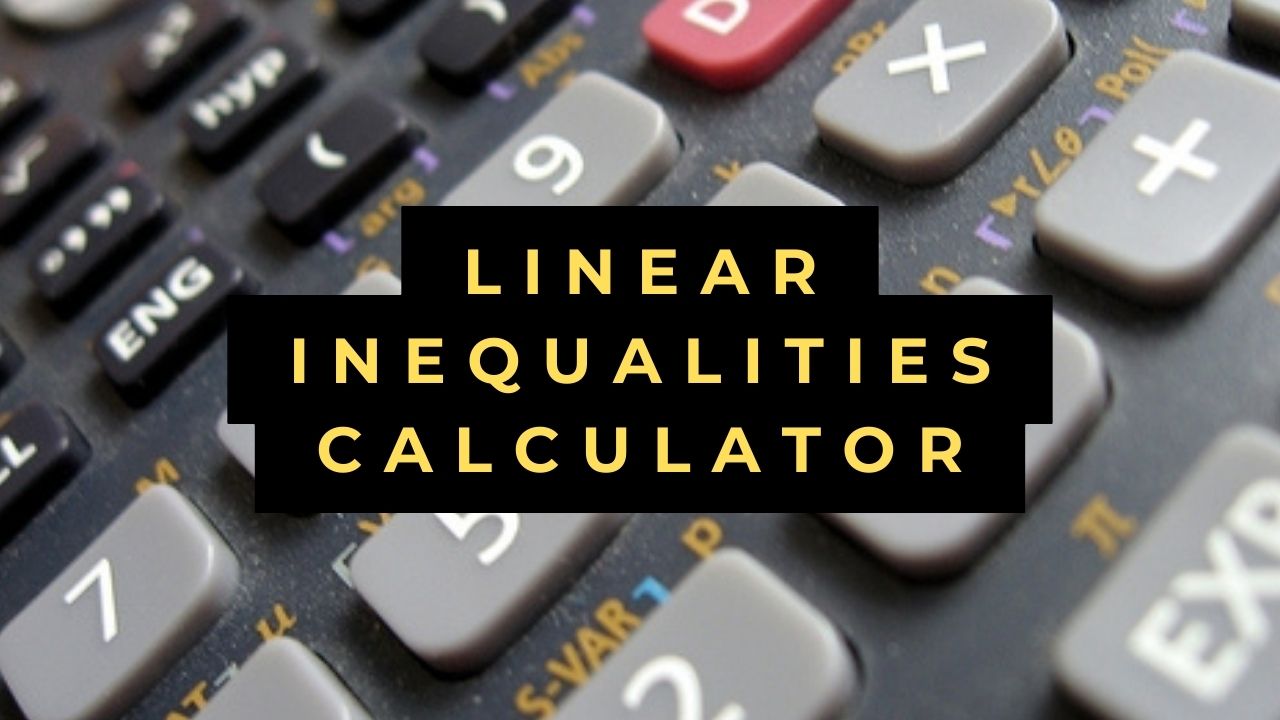Linear Inequalities Calculator
- Linear Equations In Two Variables Calculator
- Linear Correlation Coefficient Calculator
- Linear Approximation Calculator
- Line Graph Calculator
Linear Inequalities Calculator with Steps
Linear Inequalities Calculator
Linear inequalities are mathematical expressions that involve linear functions and comparison operators such as greater than (>), less than (<), greater than or equal to (≥), and less than or equal to (≤). These inequalities play a crucial role in various mathematical concepts, including algebra, optimization, and decision-making.
Understanding Linear Inequalities Calculator Graphically
Graphical representation is a powerful tool for visualizing linear inequalities. By plotting linear equations on a coordinate plane and shading the region that satisfies the given inequality, we can understand the feasible solutions intuitively.
Solving Linear Inequalities Algebraically
Algebraic methods involve manipulating the inequality equation to isolate the variable and determine the solution set. Techniques such as isolating the variable, combining like terms, and applying properties of inequalities are commonly used to solve linear inequalities algebraically.
Applications of Linear Inequalities
Linear inequalities find applications in various real-world scenarios, such as budgeting, resource allocation, and production planning. These inequalities help in modeling constraints and optimizing decisions to achieve desired outcomes efficiently.
Introduction to Linear Inequalities Calculator
A linear inequalities calculator is a digital tool designed to solve linear inequalities quickly and accurately. It simplifies the process of solving complex inequalities by providing instant results and graphical representations, aiding in better understanding and decision-making.
How to Use a Linear Inequalities Calculator
Using a linear inequalities calculator is straightforward. Users input the inequality equation, specify the variable of interest, and the calculator generates the solution set along with a graphical representation, if required. It offers convenience and efficiency in solving linear inequalities.
Advantages of Using a Linear Inequalities Calculator
The use of a linear inequalities calculator offers several advantages. It saves time by automating the solving process, reduces errors, and provides visual representations for better comprehension. Additionally, it allows users to focus on understanding concepts rather than intricate calculations.
Common Mistakes to Avoid When Using a Linear Inequalities Calculator
While linear inequalities calculators are efficient tools, users should be cautious of common mistakes such as input errors, misinterpretation of results, and overlooking domain restrictions. By double-checking inputs and understanding the calculator's functionalities, accuracy can be ensured.
Comparison with Manual Methods
Comparing the use of a calculator with manual methods highlights the trade-offs between speed and understanding. While calculators offer speed and convenience, manual methods promote a deeper understanding of concepts and techniques. Both approaches complement each other in learning mathematics.
Tips for Enhancing Skills in Solving Linear Inequalities
To improve proficiency in solving linear inequalities, consistent practice is essential. Utilizing resources such as textbooks, online tutorials, and practice problems can reinforce concepts and enhance problem-solving skills. Additionally, seeking guidance from teachers or peers can provide valuable insights.
FAQs (Frequently Asked Questions)
Can a linear inequalities calculator solve inequalities with multiple variables?
Is it necessary to learn manual methods for solving linear inequalities if we have a calculator?
Are linear inequalities calculators suitable for educational purposes?
Can linear inequalities calculators handle complex inequalities?
How accurate are the results obtained from linear inequalities calculators?
Conclusion
In conclusion, linear inequalities calculators are valuable tools for solving inequalities efficiently and accurately. They streamline the solving process, provide visual representations, and facilitate better understanding of mathematical concepts. By utilizing these calculators alongside manual methods and practicing regularly, individuals can enhance their skills in solving linear inequalities and excel in mathematics.

